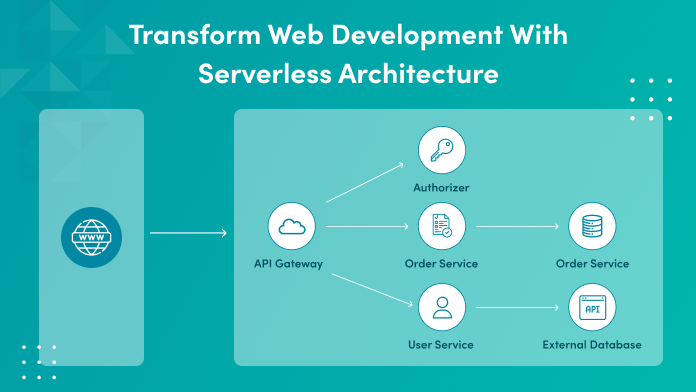Backend development helps develop the logic and functionality of a website. It helps make a website responsive, interactive, dynamic, etc. But backend web development is not the smooth process that it seems like. Expanding resources, the need for robust security, server management, performance improvement, etc., are some challenges faced by a backend web developer in California. These make backend development expensive and time-consuming. However, adopting the serverless architecture has added a new paradigm to backend web development. Let us briefly understand what serverless architecture means and how it is redefining backend web development.
Serverless Architecture: A Brief Look At The Key Components
As the name suggests, this web development method helps developers create and execute web apps and solutions without using servers. Instead, they leverage the cloud platform to handle web development infrastructure and execute the app or web solution. Thus, developers do not have to undertake the additional task of managing servers. This allows them to concentrate on app development and enhance its efficiency, quality, and performance. Additionally, using the serverless architecture for web development makes the whole process agile and cost-effective.
The serverless architecture works like the function-as-a-service (FaaS) model. In this model, discrete functions are executed in response to specific events. This event-driven modularity helps web apps developed using serverless architecture to scale up automatically and allocate resources dynamically on demand. The key components that enable this include:
Functions
Functions are specific tasks or operations triggered by events. They form the fundamental core of serverless architecture. Implementing functions accurately can maximize app performance. However, the most significant advantage of functions is that developers can deploy them independently. To this end, it may be helpful to leverage the services of a professional website development company in California. These companies are experts in using this event-driven modularity to promote the microservices architecture. Consequently, the risks associated with monolithic apps are automatically reduced.
Event sources
Events form the very essence of serverless architecture. However, how these events drive relevant functions depends on where they originate. These events can originate from multiple sources like message queues, HTTP requests, timers, and database changes.
Statelessness
Serverless architectures never retain any data used in execution, not even between two executions. Hence, functions can be scaled and distributed easily without web developers in Los Angeles having to think about shared state management. This is a significant advantage of serverless web development.
Cloud infrastructure
Using the cloud platforms to handle the web app infrastructure and its execution makes serverless architecture practical and cost-effective. Developers can concentrate on improving code quality rather than worrying about server management.
Cost-efficiency, pay-as-you-go pricing, reduced operational overheads, and scalability are the key advantages of serverless architecture for backend web development.
Serverless Architecture Use Cases
Several advantages justify the use of serverless architecture in backend web development. Let us look at some use cases where a web developer in California can leverage serverless to maximize output.
Data processing
Serverless architecture processes and manages data much faster and better than even data-driven web applications. Triggering required events every time new data arises facilitates asynchronous data processing. Leveraging recent techniques like ETL, real-time data streaming, etc, serverless backend web development can process humongous amounts of data. This benefits businesses as the insights gained improve their decision-making accuracy.
Web app development
The deployment, integration, and scaling of web apps and web-based solutions is easily achieved through serverless backend development. A web development agency in California can also use the serverless to enhance frontend development. Further advanced user authentication capabilities and easy API integrations help web developers integrate advanced functionalities during web development.
API development
With serverless architecture, web developers can create individual API endpoint-specific functions. This easy API-building capability facilitates better resource usage and eliminates challenges associated with requested API volume fluctuations.
Task automation
Several repetitive tasks, such as report generation, taking backups, sending notifications, etc., can be easily automated using serverless web development. These events can also be scheduled to trigger at pre-defined intervals, ultimately improving web app efficiency.
Mobile backend services
Fluctuating user requests characterize mobile applications. California web development companies take advantage of the benefits of serverless architecture to address this constantly changing volume of user demands. They can also build backend services like push notifications, real-time data updates, etc., and manage them effectively.
Conclusion
Let us conclude this blog with a brief look into the future of serverless backend architecture. Modern applications demand scalability, flexibility, and adaptability. The serverless paradigm aligns well with these demands. Web apps built using the serverless architecture scale automatically and can handle variable loads easily. These qualities make it an asset to backend web development in an era where the digital is transforming and evolving constantly. With cloud providers improving the quality and quantity of offered services, a web developer in California will leverage them to maximize web app output innovatively. Hence, the future looks bright. There are many use cases of serverless architecture yet to be discovered. But there is no doubt that serverless architecture will reshape how we look at backend web development.





